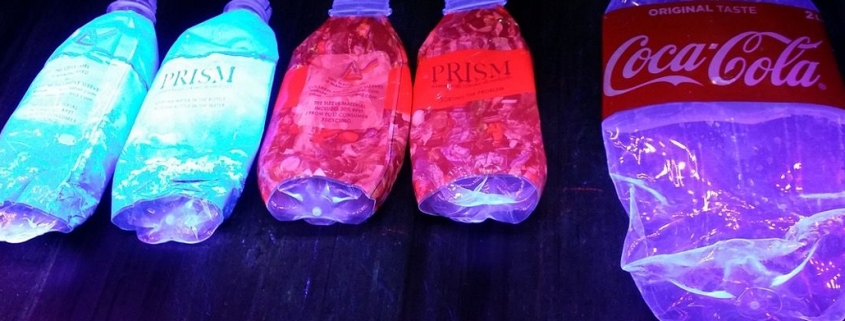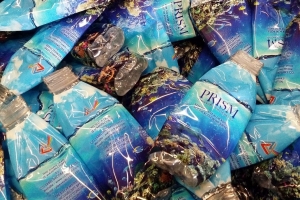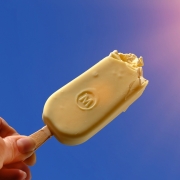Fluorescent Markers Poised to Address Sorting Challenges
A recent Greenpeace report claiming that some US companies are incorrectly labeling plastic products as recyclable reinforces the urgent need for improved sorting and identification solutions. As the report points out, many MRFs (Materials Recovery Facility) only accept PET and HDPE due to insufficient processing capabilities, a situation for which there now is a ground-breaking solution.
First, let’s look at one of the main issues, Polypropylene (PP). Whilst the packaging industry has invested in marketing PP as recyclable, not being able to differentiate between a food tray, soup pot and a fertilizer tub this obviously hampers the full recycling potential of PP.
According to the Greenpeace report, only 53 percent of surveyed MRFs take PP, and only 31 percent of US residents have access to PP collection. The stumbling block is that recyclers need to be able to identify a pack’s past history during the sorting process, and with no effective way of separating food grade from non-food grade polymers – little wonder – most of it ends up being recycled into non-packaging applications like crates and bins or, worse, goes straight to landfills or incinerators.
The issue is a global one. The European Plastics Converters Association (EuPC) reported that almost 60 percent of the European plastics converting companies find it hard to get a supply of recycled plastics materials that meet their quality standards.
According to a 2019 report by the European Commission, of the 27.1 million tons of plastic waste collected in Europe in 2016, only 31.1 percent went to recycling facilities. The rest landed at incinerators or landfills.Food grade plastic has been the most complex to obtain due to the risks of using second-hand plastics containing toxic chemicals that are potentially dangerous to human health. Now an innovative identification technology is being deployed to separate plastic to food-grade quality in one single step, thereby radically transforming the sorting process in recycling facilities. A British consortium has developed a technology that can rapidly and efficiently distinguish between food-grade and non-food-grade polymers, identify black plastics and tag full-length shrink-sleeves.
Plastic Packaging Recycling using Intelligent Separation technologies for Materials (PRISM) applies high performing luminescent materials to labels on plastic packaging, creating what is best described as an invisible barcode for plastics recycling. The process is simple. Fluorescent markers – produced from materials recovered from fluorescent lamp recycling and non-rare earth-based compounds – are printed on labels or plastic packaging sleeves. As the mixed plastic waste runs along the conveyor belt the high-speed sorting system is triggered by an ultraviolet (UV) light source that identifies the coded PRISM label and reads his code, and air propels it into the appropriate recycling stream.
Following extensive trials, PRISM is now well proven in MRF setups and is plug & play ready. It is complementary to existing NIR (Near Infrared) technology and can easily be adapted to most sorting facilities around the world to target specific recycling streams such as food contact plastic packaging. The innovative technology uses traditional labeling and branding methods and is designed to identify a host of different materials applying multiple markers for a wide range of codes. These markers can be removed during recycling leaving no traces for the next cycle of use. Even the most challenging plastic waste can now be sorted at full speed of two tons per hour to over 96 percent purity with a yield in excess of 95 percent for PET. That meets EFSA’s (European Food Safety Authority) stipulated 95 percent purity for PET food-grade plastic in a single sorting step. Other polymers such as PP may require two steps of sorting and can reach upwards of 99 percent purity. That is a significant step forward in the sub-categorization of plastics, which are sorted automatically at high speed, and it opens up a wealth of new opportunities for brand-owners wishing to recover their packaging as part of the circular economy.
Trials have been successfully conducted with recycling organizations and brand owners, and the next stages of commercialization are in progress. PRISM is set to become a vital stepping stone towards improved sorting capacity and should provide a much-needed impetus to the struggling recycling sector.
(GR22020, Page 10, Author: Professor Edward Kosior, Photo: PRISM)









